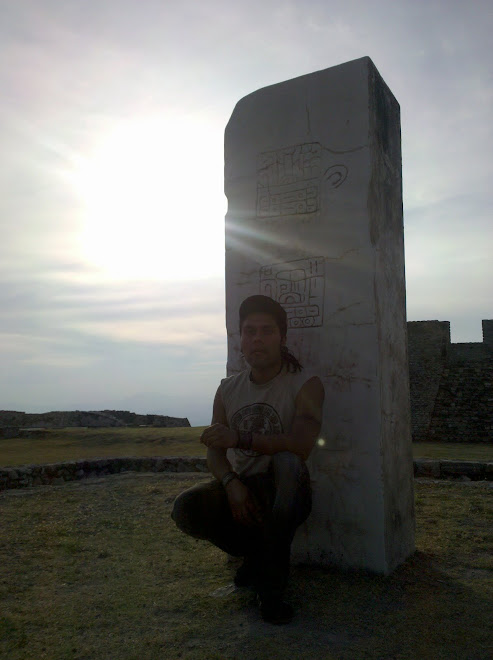



Tepoztlan whose name means “place of copper” is a town located south of Mexico City, near the city of Cuernavaca. Other meanings or names associated with the site are “place of split stones” or “place of axes”. In some records, the town is named Tepozteco because the spectacular and beautiful sierra with the same name surrounds it . The city was founded in the Late Post-Classic period by the Tlahuica people. Its pyramidal complex was dedicated to Tepoztecatl also known as Ome Tochtli, the pulque (alcoholic beverage from the maguey plant) god. He was a legendary cultural hero that after being a priest for the gods of pulque was deified. The intoxication with pulque was an important religious practice of alteration of consciousness with the purpose of communication with the gods. According to the Mendoza Codex, Tepoztlan was conquered by Motecuhzoma II Ihuilcamina, becoming tributary to Tenochtitlán.
The Pyramid-Temple of Tepoztlan
The pyramid was built on top of a mountain in the spectacular Tepoztlan sierra. The area where the pyramid was erected is rocky in nature and was artificially molded and cut. A 9.50 meter high platform was constructed there. The platform is accessed from the east side through stairs situated in the posterior part of the temple; there are other stairs in the southeast section of the edifice. On the back section of the platform, there is a raised base composed of two inclined sections separated by a passageway that has stairs on its west side leading to the temple , The temple consists of two rooms that are bordered by two meter wide walls. The first room or vestibule is formed by the extension of two side walls and two pillars , The room is six by 5.20 meters and has lateral benches and a depression at the center similar to some of the temples in Malinalco. Archaeological remains suggest that the roof was made of tezontle; door jambs and benches were made of stone. The benches have small cornices whose ornamentation is believed to represent the twenty day signs.
In the lower part of the pyramid there are two plaques; one has the hieroglyph of king Ahuitzotl, indicating a date of 1500 C.E. and the other has the date 10 Tochtli (rabbit) that corresponds to the last (final) years of Ahuitzotl’s reign. These plates indicate that this monument was constructed sometime between 1502 and 1520 C.E. The pyramid also consisted of 13 steps that symbolized the 13 levels of heaven.
Ome Tochtli, the pulque god and patron deity of Tepoztlan is related to the earth goddess. Festivals at the temple were carried out after the crop season. In addition, when a person died of alcohol intoxication, the town members would have a celebration in honor of the deceased individual. At present, on December 8 every year coinciding with the Christian festival of the Nativity, there is a festival dedicated to the cultural hero Tepoztecatl, and people still climb the mountain to place offerings to him. Tepoztlan is a place loaded with ancient traditions, legends and magic practices of Pre-Columbian affiliation.


No comments:
Post a Comment